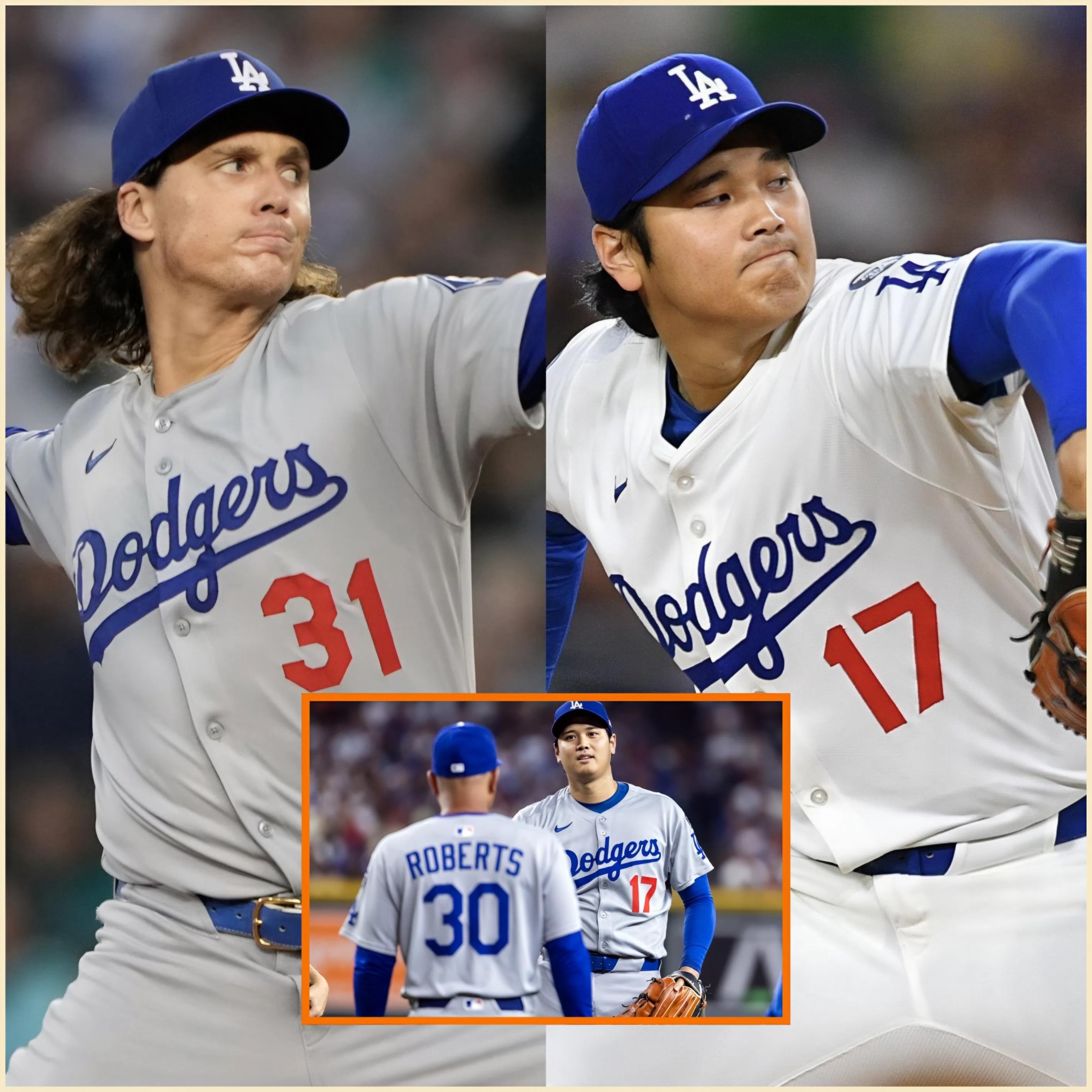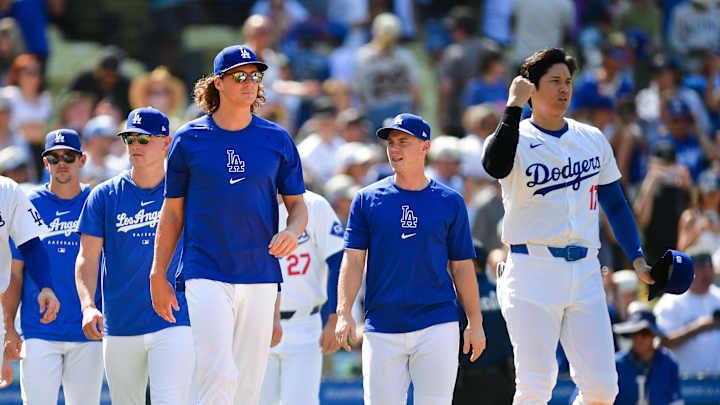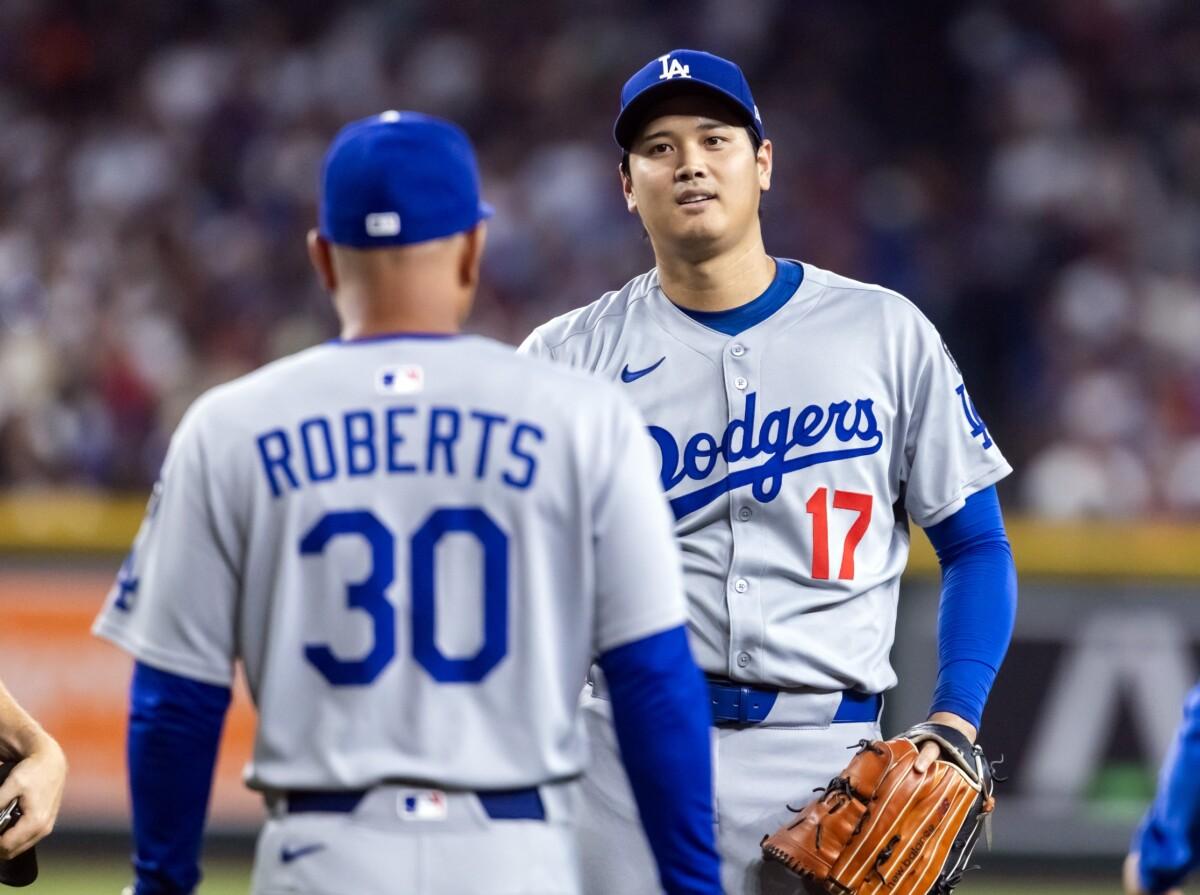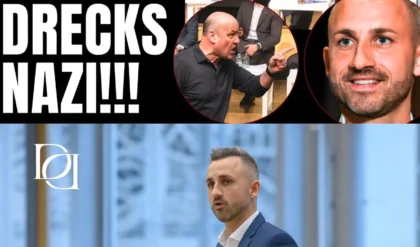Blake Snell delivered a performance for the ages in Game 1 of the NLCS, shutting out the Milwaukee Brewers for eight scoreless innings while facing the minimum. The Los Angeles Dodgers, now leading the series, are riding high on Snell’s brilliance and the clutch relief work of Blake Treinen. Manager Dave Roberts, buoyed by the victory, has unveiled the team’s pitching strategy for the remainder of the series.
With Game 2 looming at American Family Field, Yoshinobu Yamamoto is set to take the mound for the Dodgers. Roberts, in a report by USA Today’s Bob Nightengale, confirmed the team’s plans for the subsequent games in Los Angeles. The strategy hinges on leveraging the team’s aces to secure a return to the World Series.

“Tyler Glasnow will pitch Game 3. Shohei Ohtani will pitch Game 4,” Nightengale reported, outlining Roberts’ calculated approach. This plan not only addresses the immediate games but also sets up Glasnow for a potential Game 7 start. Ohtani, meanwhile, could see action out of the bullpen in a decisive Game 7, showcasing his rare two-way versatility.
The Dodgers’ pitching blueprint is designed with flexibility in mind, considering the series could extend to seven games. Snell’s Game 1 masterpiece, paired with Treinen’s lockdown relief, has positioned Los Angeles just three wins away from the World Series. If the series wraps early, Snell may not need to pitch again, but Roberts is prepared to go all-in for a Game 7 if necessary.
Glasnow’s assignment to Game 3 is a strategic nod to his recent dominance, particularly his standout performance against the Philadelphia Phillies. His ability to handle high-pressure situations makes him a natural choice for a potential do-or-die Game 7. Ohtani’s Game 4 start, meanwhile, keeps his arm fresh for a possible bullpen role later, maximizing his impact.
Ohtani’s potential bullpen appearance in Game 7 would likely limit his offensive contributions, as returning to the plate in regulation would be challenging. However, his willingness to embrace such a role underscores his commitment to the team’s success. The Dodgers’ faith in their two-way superstar reflects their confidence in his ability to deliver in critical moments.
Yamamoto, tasked with Game 2 in Milwaukee, faces a tough challenge as Brewers fans seek redemption after their team’s failed ninth-inning rally in Game 1. The young pitcher’s performance will be pivotal in maintaining the Dodgers’ momentum on the road. A strong outing could set the stage for Glasnow and Ohtani to dominate back in Los Angeles.
The Dodgers’ pitching plan is a testament to their depth and strategic foresight, built around three aces with distinct strengths. Snell’s Game 1 heroics, dubbed “Snellzilla” by fans, have set a high bar, but Glasnow and Ohtani are no strangers to pressure. Roberts’ strategy ensures the team is prepared for any scenario, from a sweep to a grueling seven-game battle.

Milwaukee, still reeling from Snell’s dominance, will come out swinging in Game 2, hoping to even the series before heading to Dodger Stadium. The Brewers’ offense, stifled by Snell’s precision, faces another test against Yamamoto’s deceptive pitching. The Dodgers, however, are banking on their rotation’s firepower to keep the Brewers at bay.
Glasnow’s recent form, particularly his ability to overpower hitters, makes him a cornerstone of the Dodgers’ postseason hopes. His Game 3 start will be a critical moment, especially if the series is tied or close. Roberts’ decision to position him for a potential Game 7 underscores the team’s trust in his ability to deliver under pressure.
Ohtani’s role in Game 4 adds another layer of intrigue, given his status as a global phenomenon. His ability to pitch and hit at an elite level gives the Dodgers unmatched flexibility. Whether starting or relieving, Ohtani’s presence on the mound is a psychological blow to opponents, amplifying the team’s aura of invincibility.
The Dodgers’ pitching strategy also reflects lessons learned from past postseasons, where depth and adaptability were key. By aligning Snell, Yamamoto, Glasnow, and Ohtani strategically, Roberts has crafted a plan that balances immediate needs with long-term contingencies. The goal is clear: secure the NLCS and advance to the World Series.
Social media has buzzed with excitement over the Dodgers’ pitching announcements, with fans praising Roberts’ calculated approach. Hashtags like #DodgersNLCS and #Snellzilla have trended as supporters rally behind the team’s star-studded rotation. The prospect of Ohtani pitching in relief has sparked particular enthusiasm, given his rare skill set.
The Brewers, meanwhile, are under pressure to counter the Dodgers’ pitching juggernaut, starting with Yamamoto in Game 2. Their lineup, which struggled against Snell’s mix of fastballs and breaking pitches, must find a way to adapt. Milwaukee’s home crowd will be a factor, but the Dodgers’ momentum feels nearly unstoppable.
If the series extends to Los Angeles, Dodger Stadium will be electric, with fans eager to see Glasnow and Ohtani take the mound. The team’s pitching plan has instilled confidence that they can close out the series at home. However, Roberts knows the Brewers won’t go down without a fight, making every game a critical battle.
Snell’s Game 1 performance has set the tone, but the Dodgers’ success will depend on Yamamoto, Glasnow, and Ohtani executing their roles. The trio’s combined talent gives Los Angeles a significant edge, but the postseason is unpredictable. Roberts’ strategy is designed to mitigate that uncertainty, leveraging his aces’ strengths.
The possibility of Ohtani in the bullpen for Game 7 has sparked debate among analysts, who see it as a bold but risky move. His limited relief appearances this season add an element of intrigue, but his competitive drive suggests he’s ready for the challenge. For fans, the idea of Ohtani closing out a series is the stuff of legend.

As the NLCS unfolds, the Dodgers’ pitching plan positions them as favorites, but the Brewers remain a dangerous opponent. Milwaukee’s resilience, shown in their Game 1 comeback attempt, signals they won’t be easily dispatched. Yamamoto’s performance in Game 2 will set the stage for the high-stakes battles in Los Angeles.
The Dodgers’ ultimate goal—a World Series berth—feels within reach, thanks to their meticulously crafted pitching strategy. Roberts’ decision to align Glasnow and Ohtani for Games 3 and 4, with Snell looming as a Game 7 option, reflects a team built for October. Los Angeles is poised to capitalize on their momentum, but the road ahead demands precision.
This NLCS showdown is more than a series—it’s a showcase of the Dodgers’ pitching depth and star power. With Snell, Yamamoto, Glasnow, and Ohtani leading the charge, Los Angeles is dreaming of another championship run. For now, all eyes are on Game 2, where Yamamoto aims to keep the Brewers’ bats silent and bring the Dodgers one step closer to glory.
(Word count: 1000)
<xaiArtifact artifact_id=”6a98dcae-215a-4823-a849-d2f69cf40dd4″ artifact_version_id=”f9046244-106c-456e-96d9-e0b32ece8871″ title=”Dodgers_NLCS_Pitching.txt” contentType=”text/plain”>
Blake Snell delivered a performance for the ages in Game 1 of the NLCS, shutting out the Milwaukee Brewers for eight scoreless innings while facing the minimum. The Los Angeles Dodgers, now leading the series, are riding high on Snell’s brilliance and the clutch relief work of Blake Treinen. Manager Dave Roberts, buoyed by the victory, has unveiled the team’s pitching strategy for the remainder of the series.
With Game 2 looming at American Family Field, Yoshinobu Yamamoto is set to take the mound for the Dodgers. Roberts, in a report by USA Today’s Bob Nightengale, confirmed the team’s plans for the subsequent games in Los Angeles. The strategy hinges on leveraging the team’s aces to secure a return to the World Series.
“Tyler Glasnow will pitch Game 3. Shohei Ohtani will pitch Game 4,” Nightengale reported, outlining Roberts’ calculated approach. This plan not only addresses the immediate games but also sets up Glasnow for a potential Game 7 start. Ohtani, meanwhile, could see action out of the bullpen in a decisive Game 7, showcasing his rare two-way versatility.
The Dodgers’ pitching blueprint is designed with flexibility in mind, considering the series could extend to seven games. Snell’s Game 1 masterpiece, paired with Treinen’s lockdown relief, has positioned Los Angeles just three wins away from the World Series. If the series wraps early, Snell may not need to pitch again, but Roberts is prepared to go all-in for a Game 7 if necessary.
Glasnow’s assignment to Game 3 is a strategic nod to his recent dominance, particularly his standout performance against the Philadelphia Phillies. His ability to handle high-pressure situations makes him a natural choice for a potential do-or-die Game 7. Ohtani’s Game 4 start, meanwhile, keeps his arm fresh for a possible bullpen role later, maximizing his impact.
Ohtani’s potential bullpen appearance in Game 7 would likely limit his offensive contributions, as returning to the plate in regulation would be challenging. However, his willingness to embrace such a role underscores his commitment to the team’s success. The Dodgers’ faith in their two-way superstar reflects their confidence in his ability to deliver in critical moments.
Yamamoto, tasked with Game 2 in Milwaukee, faces a tough challenge as Brewers fans seek redemption after their team’s failed ninth-inning rally in Game 1. The young pitcher’s performance will be pivotal in maintaining the Dodgers’ momentum on the road. A strong outing could set the stage for Glasnow and Ohtani to dominate back in Los Angeles.





